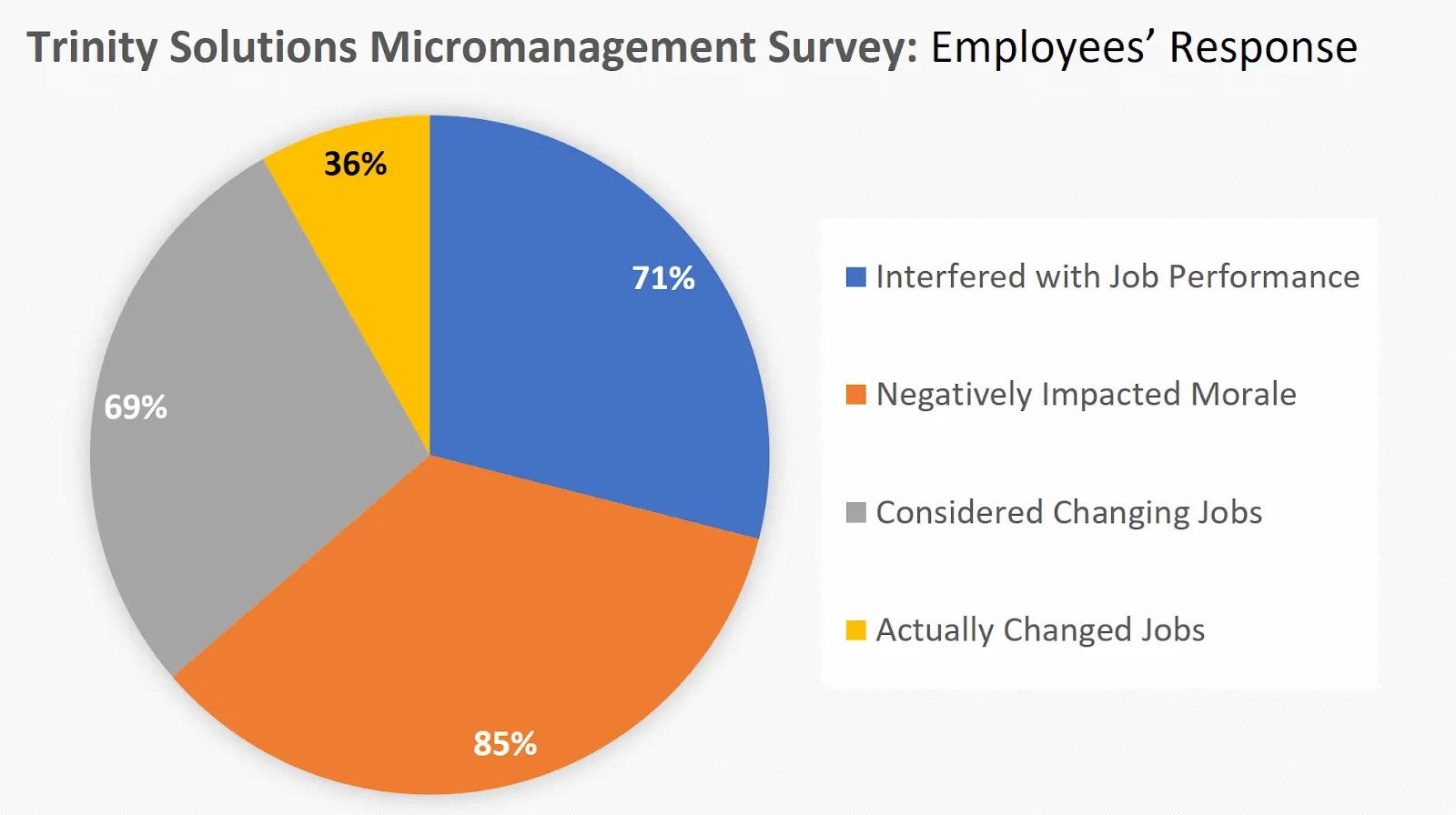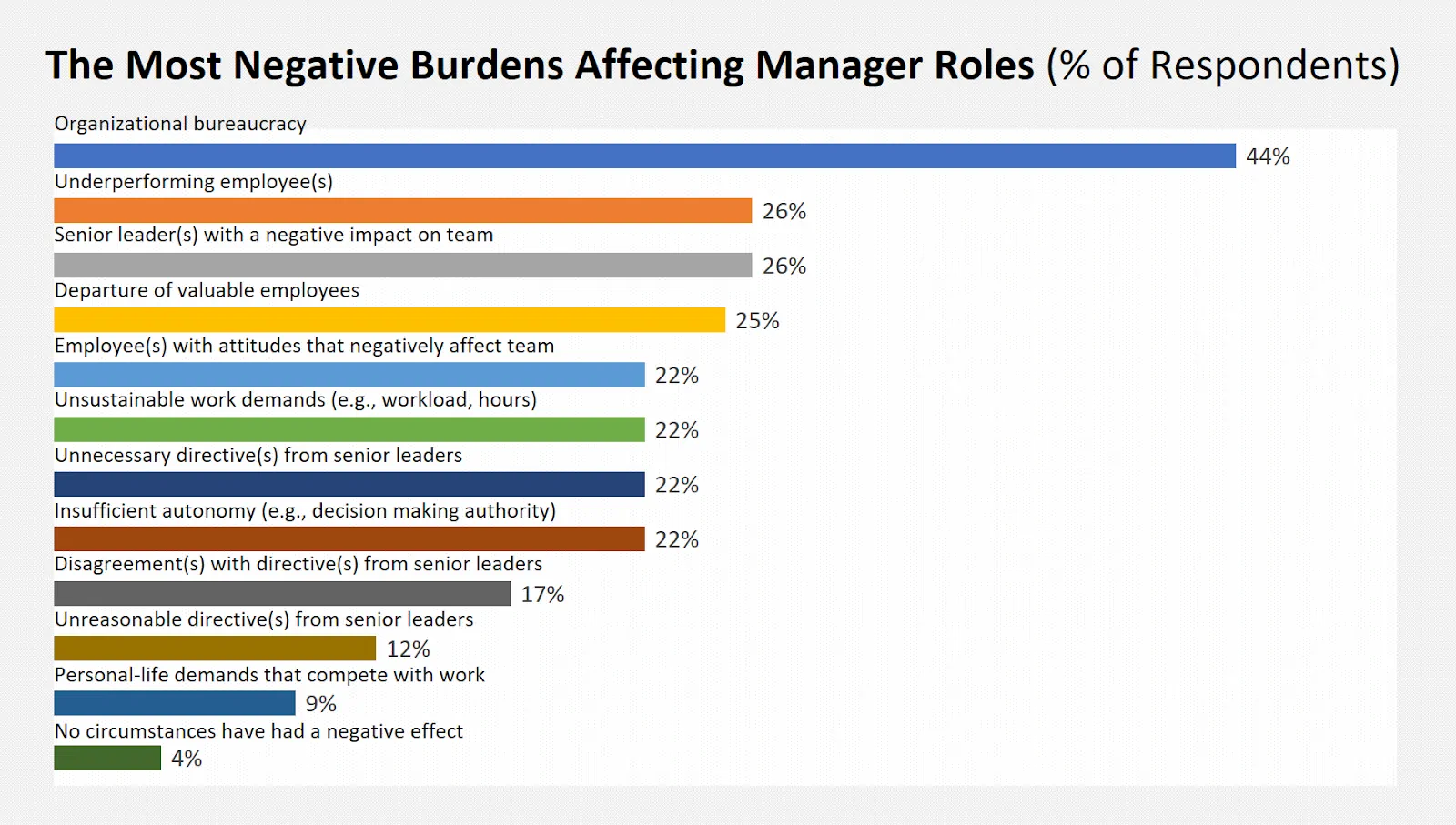There are more job vacancies in the US right now than there are people to fill them. The latest data shows 9.5 million job openings and only 6.5 million registered unemployed workers. [1] That’s created a lot of competition for America’s top talent. Empowering employees not only attracts the best people but also helps retain them. But how does employee empowerment benefit your organization? More to the point, are there any downsides to employee liberation you need to know about?
Companies often struggle to drive ambitious goals while grappling with the challenges of attracting and retaining top talent. Fostering a culture of employee empowerment can help, but keep in mind that the path is rarely straightforward. For example, worker empowerment might not be a good fit for all roles. There may be times when empowered employees slow down processes or make decisions that lead to errors.
The first step in addressing this challenge is fully grasping what the modern worker desires in today’s employee-driven workplace. But beyond just empowering employees, the bigger picture also addresses the needs and demands of those who manage the teams reporting to them. This article explores all the angles to help you initiate a successful transformation of working practices and culture.
Employee Empowerment in 2024 and Beyond
Employee empowerment in 2024 and beyond necessitates dramatic changes for some organizations. Managers might need to shift the balance of control to give employees autonomy and skill development opportunities to encourage potential. Worker empowerment typically fosters more flexible work arrangements. It involves individuals and teams in important decision-making, goal-setting, and problem-solving processes.
However, empowering employees involves more than just focusing on work practices. It’s an integrated approach that also embraces well-being initiatives and recognition programs that show the company sees its workers as valued individuals. The new generation of workers is increasingly aware of their rights. Employee rights awareness is rising, so employers who adopt empowering practices are more attractive to employees and job seekers. [2]
When Empowering Employees Works
The empowerment philosophy doesn’t exist merely to pander to young workers’ demands. It yields numerous benefits for your organization as well as its workforce.
| Most Notable Benefits | Description |
| Increased Engagement | Engaged employees feel valued and trusted and have ownership over their workload. They experience psychological empowerment, resulting in higher levels of productivity, job satisfaction, and organizational commitment. [3] |
| Improved Problem-Solving | Empowered employees tend to take initiative and employ creative problem-solving approaches that foster innovation within an organization. |
| Reduced Turnover | Positive work environments that offer growth opportunities attract prospects and cultivate employee loyalty. That leads to reduced turnover rates, saving time and resources. |
Let’s dig into these and other less obvious employer/employee benefits in more detail.
Benefits of Employee Empowerment for Organizations
Workforce autonomy is the opposite of micromanagement. Still, 79% of workers who took part in a Trinity Solutions survey experienced overcontrolling managers. It’s a broken approach that has direct, indirect, and latent consequences for US businesses. It’s worth comparing these harms before contrasting the benefits of empowering employees. [4]

Data source:https://www.bkconnection.com/static/My_Way_or_the_Highway_EXCERPT.pdfBK Connections
Micromanagement controls every detail, and the surveyed data suggests it suffocates creativity and stifles productivity. It makes more sense to boost employee confidence and motivation through empowerment than to diminish it with micromanagement.
Here are five organizational returns employee autonomy offers your business.
#1 Increased productivity and innovation: Because empowered employees are more engaged than disempowered workers, they take ownership and find better ways of doing things. They independently or jointly help solve problems, contribute fresh ideas, and promote a culture of innovation. [5]
#2 Improved morale and retention: Empowered employees are more satisfied and happy in their work. High workplace morale results in lower turnover rates, which saves your company time and money on recruitment and training. [6]
#3 Enhanced customer experience: An empowered employee is more committed to delivering exceptional customer service. Being free to make on-the-spot decisions to resolve customer issues produces positive experiences for all parties.
#4 Stronger company culture: Empowerment builds a culture of trust, collaboration, and open communication. It creates positive work environments where workers feel confident sharing ideas and supporting one another. [7]
#5 Better decision-making: Empowered employees tend to be closer to the action, enabling them to make quicker, more informed decisions. Having this agility helps your businesses respond swiftly to market changes and capitalize on opportunities.
How Empowerment Cultures Benefit Employees

Empowering employees covers the wants, needs, and desires of the modern worker. This is no small detail in a time of massive labor shortage. Companies and hiring managers are struggling to compete for—and hold on to—top talent during the so-calledhttps://ewfinternational.com/great-resignation-leadership-development/Great Resignation. Promoting an empowerment culture secures your company with a competitive edge. [8]
Understanding Today’s Workforce: How Tuned In Are You?
It’s important to note that the new generation of employees has different priorities than their older counterparts. Today’s workers place work-life balance, purpose, and professional development at the top of their priority lists. They seek empowerment leadership, transparency, flexibility, and inclusion in decision-making processes. In other words, they want to be a part of rather than apart from the companies they work for.
A culture of empowerment can meet these needs and enhance the overall employee experience. This translates into numerous tangible benefits, as shown below:
(Be sure to highlight the job and personal growth opportunities in your recruitment initiatives.)
Employee Empowerment: Job Satisfaction and Work Performance
-
- Higher job satisfaction and workplace morale
-
- Improved job performance/productivity
-
- Greater task creativity and innovation
-
- Better work-life balance and job engagement
-
- Higher levels of motivation and employee engagement
Employee Growth and Personal Development
-
- Increased sense of ownership/responsibility
-
- Skill development and continuous learning opportunities
-
- Enhanced problem-solving abilities
-
- Increased autonomy and decision-making
-
- Improved self-confidence and initiative
-
- Recognition/appreciation of contributions
-
- Career advancement and growth prospects
Creating an empowerment culture from scratch entails risks, so let’s discuss those.
Challenges and Risks of Employee Empowerment
You can measure the effectiveness of your company’s empowerment drives by evaluating factors like job satisfaction, performance, and overall employee engagement. Understanding these dynamics helps you mitigate the associated challenges and risks. Be mindful that empowerment is not merely a bestowed privilege but a philosophy used to cultivate growth and competency in workers. The main reasons some initiatives fail are typically due to unawareness and poor management.
Don’t Force the Fit: Recognize the Failure Risks

Uncertain expectations, limited support, and a lack of proper resources contribute to failure risks and confusion. These oversights hinder performance and lower morale, even within companies that seem to be promoting employee autonomy. So, trying to empower workers without providing a solid foundation can be futile and end up backfiring.
Here are 10 known causes of empowerment failure to be mindful of:
-
- Managers express support but without genuine belief
- Lack of insight into what empowerment entails
- Ambiguous boundaries and decision-making
- Micromanagement undermining trust and empowerment
- Limited direction and development opportunities
- Inadequate access to information and resources
- Taking a punitive approach, blaming employees for failures
- Letting barriers impede empowered behaviors
- Unaddressed employee needs and compensation
- Responsibility-description mismatch
Other Potential Risks of Empowering Employees
Investing in employee autonomy comes with other potential risks you need to be mindful of. Examples such as security breaches, budget overruns, and inconsistent guidelines can all cause issues. Therefore, empowerment initiatives need careful thought and execution to prevent them from veering off course from your organizational objectives.
To successfully navigate the path of employee empowerment, leaders must understand and prepare to address potential downsides. Here’s a breakdown of the key risk factors that can emerge if not managed effectively:
-
- Empowerment risks increase when strategies lack direction
- Lack of solid training and resources
- Not balancing autonomy with accountability
- Little or no trust between management and staff
- Irregular monitoring and evaluation
- Poor communication channels
Implementing a Culture of Empowerment
Implementing a new—or building on an existing—culture of empowerment begins by paying close attention to potential risks related to your business. This diligence lays the foundation for safeguarding strategies and organizational ideals as you proceed.
Effective empowerment cultivates a well-equipped workforce, one that enables informed decisions and effective job execution. Understanding your employees’ needs is paramount for recognizing their motivations. Your middle managers can initiate empowerment by granting autonomy and shifting from top-down approaches. Strategies must include adequate resources, training, and access to information.
Refer to this simple checklist while building your culture of empowerment:
-
- Risk assessment
- Employee needs
- Manager awareness and training
- Resource allocation
- Information access
We’ll explore the tactics and techniques to empower middle managers shortly. First, let’s focus on the crucial role they play in laying the groundwork for building a culture of empowerment.
Empowered Middle Managers: A Precious Resource
How supportive is your organization of its middle managers? These critical, often-beleaguered roles face immense pressure to perform from all angles yet are often inhibited and underutilized. A McKinsey study highlighted a range of expectations and obstacles faced by today’s middle managers, with organizational bureaucracy as the top bugbear.

Data source:https://www.mckinsey.com/capabilities/people-and-organizational-performance/our-insights/stop-wasting-your-most-precious-resource-middle-managers McKinsey & Company
The McKinsey survey shows that senior leadership has different ideas about what middle managers do best. However, when freed from non-managerial tasks and administrative bureaucracy, middle managers can become your most precious assets. To achieve that outcome, you might need to significantly redefine roles and streamline processes. Only then can they focus their skills and efforts on developing a culture of employee empowerment.
Why Employees and Senior Leaders Need Middle Managers
The roles and responsibilities of middle managers vary between companies, workplace cultures, and industries. But in all cases, they are the information conduit of upper management. They are hands-on in day-to-day operations, dealing with customers and front-line employees. However, they are also ideally positioned to take a step back from the daily grind and maintain a strategic perspective on overall goals. That’s provided they are free to focus on their role and not distracted by organizational bureaucracy. [9]
How empowered are your middle managers, and why does empowering leadership matter?
A 2017 study examined how empowering leadership (EL) impacts employees. Researchers analyzed over 100 groups of workers and found that EL has clear benefits. The employees working under empowering leaders performed better, helped their colleagues, and were more creative overall, both individually and as a team. [10]
———————————————————————————————————————
Empowering Middle Management: Your Key to a Thriving Workforce
Building a culture of empowerment starts with your middle managers. EWF’s empowerment leadership programs and individualized coaching equip them with the skills needed to champion this approach. When empowered leaders empower teams, the results are clear: improved performance, stronger teamwork, and a surge in creativity.
Ready to Build Your Future-Proof Workforce? Contact EWF to Learn More!
———————————————————————————————————————
How Empowered Managers Empower Employees
There is no one-size-fits-all approach to creating a culture of employee empowerment. Your current culture will set the tone. Also, workers have individual differences, and team dynamics can vary greatly. Despite that, there are four steps and 12 strategies all middle managers can implement to start building a foundation to empower employees:
| 1. LEAD BY EXAMPLE Be approachable and supportive Embrace transparency Delegate effectively | 2. EMPOWER DECISION-MAKING Offer clear expectations and boundaries Equip individuals and teams with resources Encourage calculated risks |
| 3. INVEST IN INDIVIDUALS & TEAMS Foster open communication Recognize and reward contributions Provide opportunities for growth | 4. BUILD TRUST AND SAFE SPACES Create a safe space for feedback Celebrate diversity of thought Focus on strengths |
Two Case Studies of Empowered Work Cultures
Zappos: This online retailer empowers employees by encouraging them to detect problems, propose solutions, and make independent team decisions. Zappos’ approach to employee empowerment fosters ownership and innovation while offering outstanding customer service.
Nordstrom: The luxury department store stands out for its exceptional customer service. This company empowers its employees through a unique method using a single rule: “Use your good judgment in all situations.” There are no other rules. This approach trusts workers to make decisions that benefit all parties, i.e., employees, customers, and company.
In Conclusion
Empowering employees isn’t just the latest buzzword in corporate America. It’s a strategic approach to building a successful, future-proof organization in today’s overly competitive job market. Despite potential challenges, the benefits for both the workforce and the organization are undeniable. When middle managers are free to champion a culture of empowerment, great things happen. Not only is there greater innovation but also significant improvements in employee morale and retention.
———————————————————————————————————————
Resource Links
———————————————————————————————————————




